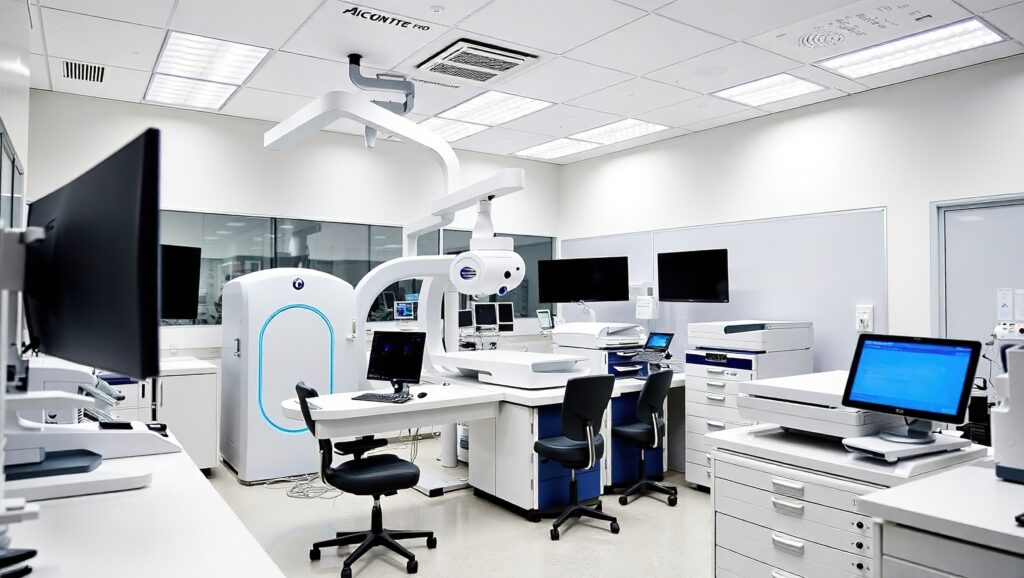Radiopharmacy continues to gain momentum as one of the most dynamic areas in modern medicine, bridging chemistry, imaging, and targeted therapy. Over the past year, the field has seen a surge of strategic collaborations, clinical advancements, and infrastructure investments aimed at transforming how radiopharmaceuticals are developed, produced, and delivered to patients.
Building Alliances for Radiopharmaceutical Innovation
Collaboration has become a defining feature of recent progress in radiopharmaceutical research. In the United Kingdom, Medicines Discovery Catapult (MDC) has joined forces with Crown Bioscience to establish a translational biology platform focused on radiopharmaceutical innovation. This partnership aims to accelerate the pre-clinical and early clinical development of new diagnostic and therapeutic radiopharmaceuticals by linking molecular imaging data with biological models.
Similarly, XenoSTART and Minerva Imaging have expanded their decade-long partnership to include an integrated radiopharmaceutical drug-development platform. The initiative combines XenoSTART’s patient-derived xenograft (PDX) models with Minerva’s radionuclide imaging and manufacturing expertise, enabling a more streamlined route from laboratory discovery to first-in-human studies.
These alliances reflect a growing trend toward collaborative networks that merge imaging, biology, and manufacturing capabilities—an approach increasingly seen as essential for progressing complex radiopharmaceutical therapies.
New Agents Entering Clinical Development
Several novel radiopharmaceuticals are making their way into early-phase clinical trials, representing a shift from conventional radiotracers towards highly targeted theranostic agents.
Tagworks Pharmaceuticals recently received clinical trial authorisation for TGW211, a HER2-targeted radioimmunoconjugate designed for HER2-positive solid tumours. This candidate uses a “Click-to-Release” linker platform that enables controlled release of the therapeutic payload, potentially improving both safety and efficacy.
In another notable deal, Philochem AG has licensed the worldwide rights to OncoACP3—a new radiopharmaceutical targeting prostate cancer—to RayzeBio, a Bristol Myers Squibb subsidiary. The agreement, valued at up to US $1.35 billion, underscores the strong commercial and clinical interest in next-generation radiotherapeutics.
These developments illustrate how pharmaceutical and biotechnology companies are moving rapidly to exploit radiochemistry’s potential in precision oncology, where imaging and therapy can be integrated into a single patient-specific strategy.
Strengthening the UK Radiopharmacy Infrastructure
While research progress is accelerating, the radiopharmaceutical sector also faces critical infrastructure and supply challenges. The United Kingdom has recognised the need to secure a sustainable domestic capability for isotope production and GMP manufacturing.
The recently launched Trusted Advisor Group (TAG) aims to support the radiopharmaceutical ecosystem—linking academia, the NHS, regulators, and industry—to enhance resilience and access across the supply chain. At the same time, Guy’s and St Thomas’ NHS Foundation Trust has announced plans for a new GMP-compliant radiopharmaceutical manufacturing unit in London. Operating under a hub-and-spoke model, the facility will provide both diagnostic and therapeutic services, ensuring a more reliable supply and faster clinical turnaround.
King’s College London has also secured a grant of £268,301 to develop key radiopharmaceuticals for the treatment of neuroblastoma in children, focusing on [¹²⁴I]mIBG, [¹⁸F]mFBG and [²¹¹At]mABG. These projects highlight the UK’s commitment to maintaining domestic R&D capabilities and advancing targeted treatments for rare and paediatric cancers.
Addressing Supply, Regulation, and Skills Gaps
The radiopharmacy sector faces several practical hurdles. Isotope supply remains a recurring concern, as many radionuclides used in diagnostics and therapy are imported from overseas reactors with limited production capacity. Regulatory complexity, workforce shortages, and manufacturing scale-up also pose ongoing challenges.
The National Physical Laboratory and Nuclear Medicine Institutes have called for improved regulatory clarity, dedicated radiopharmaceutical training programmes, and investment in modern production infrastructure. Addressing these gaps is crucial for meeting the increasing demand for both diagnostic tracers and therapeutic isotopes.
The Rise of Theranostics and Personalised Dosimetry
The fusion of imaging and therapy—known as theranostics—continues to shape the future of radiopharmacy. Targeted alpha therapy (TAT) is emerging as one of the most promising modalities, delivering high-energy radiation directly to cancer cells while limiting damage to surrounding tissue. As clinical adoption expands, research is focusing on improving dosimetry through advanced imaging, artificial intelligence, and quantitative analytics to individualise treatment for each patient.
This convergence of precision imaging and molecular therapy reflects a broader shift toward personalised medicine, where radiopharmaceuticals play a central role in diagnosis, treatment selection, and real-time therapeutic monitoring.
Looking Ahead
Radiopharmacy is rapidly moving from a niche discipline to a central pillar of modern healthcare. The combination of targeted molecular design, advanced imaging technologies, and strengthened manufacturing infrastructure positions the field for substantial growth over the next decade.
For the UK, investment in domestic isotope production, GMP facilities, and workforce development will be essential to maintain competitiveness and ensure patient access to cutting-edge radiopharmaceutical therapies. Globally, the increasing integration of biology, imaging, and radiochemistry is paving the way for a new generation of personalised, image-guided treatments.
The future of radiopharmacy lies not only in the development of innovative compounds but also in the systems and collaborations that enable them. As partnerships deepen and infrastructure expands, radiopharmaceuticals are set to become a cornerstone of precision medicine—bridging the diagnostic and therapeutic divide with unprecedented accuracy.
Disclaimer
The information provided in Radiopharmacy Advances Driving the Future of Theranostics is intended for general educational and informational purposes only. While every effort has been made to ensure the accuracy and reliability of the content at the time of publication, Open MedScience makes no representations or warranties, express or implied, regarding the completeness, accuracy, or suitability of the information contained herein.
This article does not constitute professional medical, scientific, or regulatory advice. Readers are advised to seek guidance from qualified healthcare professionals, researchers, or regulatory authorities before making any decisions based on the content of this publication. References to organisations, companies, or products are provided for informational purposes and do not imply endorsement or affiliation by Open MedScience.
All opinions expressed are those of the respective authors and contributors and do not necessarily reflect the views of Open MedScience or its editorial team. Open MedScience accepts no liability for any loss or damage arising from the use or reliance on the information contained in this article.
You are here: home » diagnostic medical imaging blog »



